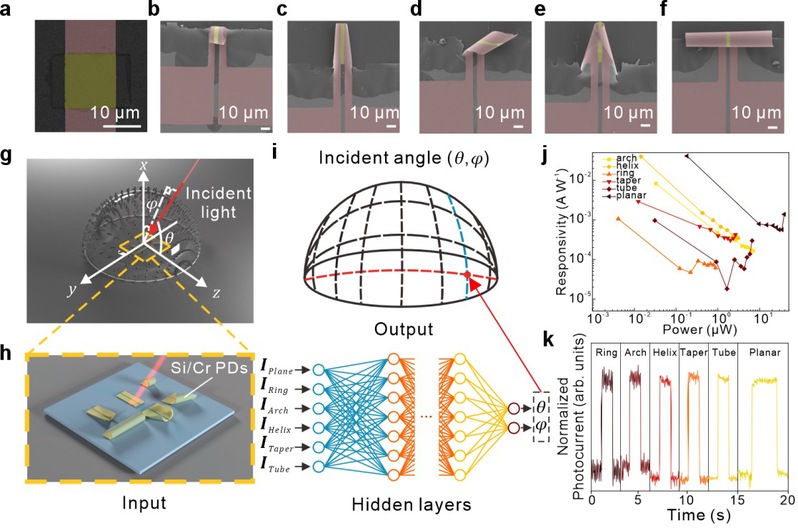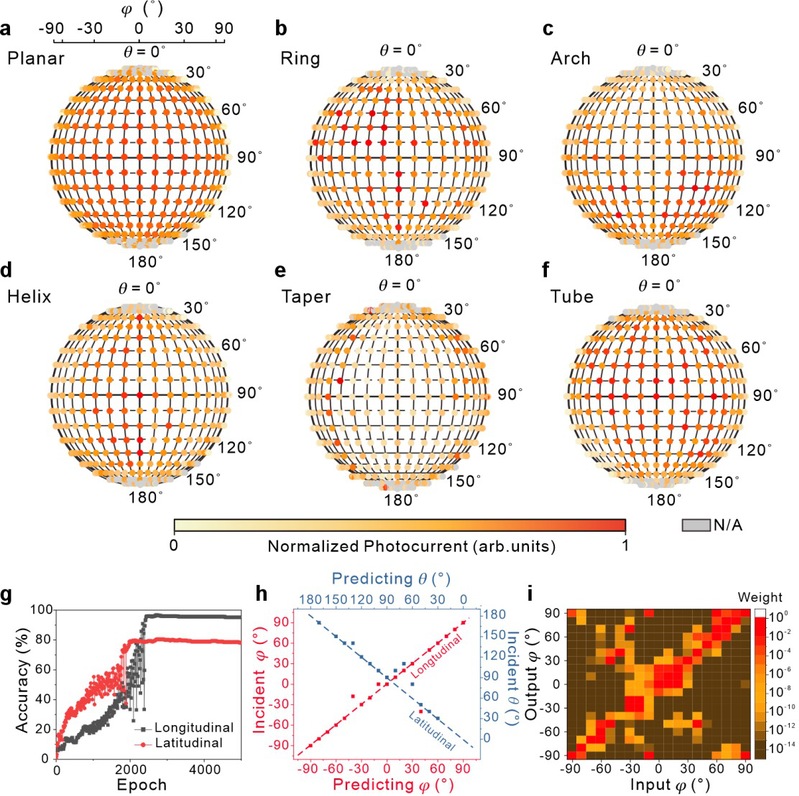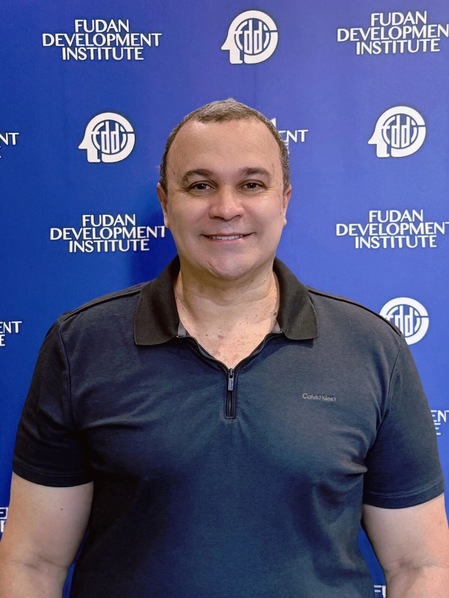The angle-sensitive photodetection is crucial for the spatial positioning of several types of equipment and is of great significance in the fields of aerospace, intelligent driving, and intelligent robots. At present, common applications for angle-sensitive photodetection are usually achieved by micromechanical scanning systems and CMOS optoelectronic arrays. However, the micromechanical scanning systems are hard to miniaturize and exhibit low mechanical durability. The preparation of various units in CMOS optoelectronic array devices is complex, restricting further applications of angle-sensitive photodetection. With the development requirements of device miniaturization and intelligence, photodetection based on integrated microstructures on chip is important for advanced electronic devices and their optoelectronic applications in the future. This technology can provide a high-efficiency, low-cost method for the design in the field of three-dimensional spatial positioning.
Recently, the research group of Professor MEI Yongfeng from the Department of Materials Science of Fudan University published an article in Nature Communications entitled “Multilevel design and construction in nanomembrane rolling for three-dimensional angle-sensitive photodetection”. Doctoral student ZHANG Ziyu and Dr. WU Binmin are the co-first authors, and Professor MEI Yongfeng is the corresponding author.

Figure 1 (a) Planar, (b) ring, (c) arch, (d) helix, (e) taper and (f) tube photodetectors. (g) Schematic of the omnidirectional photoresponse measurement setup. (h) Nanomembrane photodetectors at the spherical center of omnidirectional light controller. (i) Schematic of neural-network-assisted analysis of the incident angle. (j) Responsivity and (k) response time of three-dimensional photodetectors.
The research team proposed a multi-level quasistatic finite element analysis method and prepared six types of silicon/chromium nanomembrane assembly three-dimensional(3D) microstructures and corresponding three-dimensional photodetectors based on the method (Figure 1(a)-(f)). The team proposed to utilize 3D-structured photodetectors with different structures and deep neural network algorithms to analyze the response of each photodetector to the incident light in different angles, and then realize 3D angle-sensitive photodetection of incident light. (Figure 1(g)-(i)). It is shown that the 3D-structured nanomembrane photodetectors display excellent photoresponse in the visible range as well as sub-millisecond response times (Fig. 1(j)-(k)), which are sufficient to support the construction of the photodetection dataset in the deep neural network algorithm.

Figure 2 Three-dimensional incident light response of (a) plane, (b) ring, (c) arch, (d) helix, (e) taper and (f) tube photodetector. (g) The epoch-dependent recognition accuracy of training set in longitudinal and latitudinal direction using DNN. (h) Angle identification of incident angle in longitudinal (φ= 0°) and latitudinal (θ= 40°) direction. (i) Weight mapping of output angles and input angles of longitudinal direction (φ= 0°).
All types of micro-structured photodetectors exhibit anisotropy to the angle of incident light, and the photoresponse of each incident angle is collected into a set of data for neural network learning (Figure 2(a)-(f)). The research team collected data from 275 different incident angles for each photodetector and constructed a database of photoresponse to three-dimensional incident light. Training sets from the longitudinal (φ = 0°) and latitudinal (θ = 40°) direction exhibit an accuracy of 95% and 78%, respectively (Figure 2(g)). The relationship between DNN-predicted incident angle and experimental angle demonstrates an accuracy of 83% and 71% for incident angle detection in an angle resolution of 10° from the longitudinal and latitudinal directions, respectively (Figure 2(h)). Moreover, the weight of the corresponding angle exhibit >10 times compared to the weight other angles, indicating the effectiveness of incident light detection (Figure 2(i)).
In summary, the combination of deep neural networks and three-dimensional nanomembrane photodetectors have achieved accurate angle-sensitive photodetection. This technology exhibit potential for applications, and provides a construction paradigm for future optoelectronics, micro-electro-mechanical systems, and microrobots.
This work is funded and supported by the National Key R&D Program, the National Natural Science Foundation, the Shanghai Science and Technology Commission and other projects. Parts of experiments were carried out in the Micro-Nano Processing and Device Public Laboratory of Fudan University.
Article link: https://www.nature.com/articles/s41467-024-47405-2





